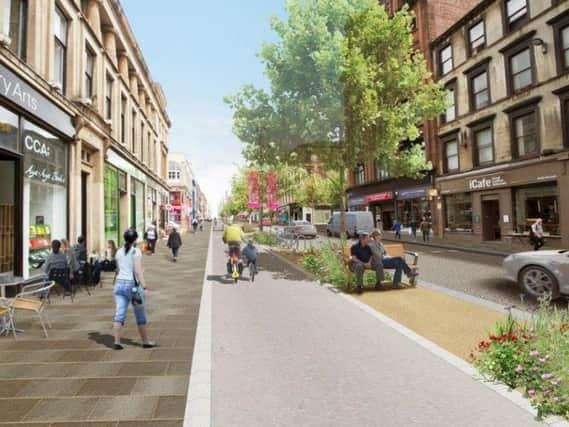Alastair Dalton: Walkers competing with cars for more space in cities


As Riccardo Marini, Edinburgh City Council’s former city design leader, put it a conference on walking in the capital on Wednesday, they are still “hungry for space”.
The increasing focus on greener fuels and computer control in discussions on how we will get about in the future often overlooks that crucial point. We may feel virtuous driving an electric vehicle, and look forward to the ability to do something else than just concentrate on the road as we are whisked from A to B in an autonomous vehicle.
Advertisement
Hide AdAdvertisement
Hide AdHowever, they take up no less precious space in city centres than other cars.
Mr Marini also pointed out at the first Scotland Walking Summit, organised by the pedestrians campaign group Living Streets, that such vehicles still pollute, since their rubber tyres and brake pads produce “really nasty stuff”, which he said was especially harmful to children. There are also fears that the increase in such pollutants from rising traffic levels is cancelling out the fall in other harmful emissions thanks to cleaner engines.
Another factor – which occurred to me when I was lent an electric car to drive for a weekend – is that an over-emphasis on greener fuels could divert people from realising they are no healthier in such vehicles, being still seated and largely immobile in a metal box.
You’d expect Mr Marini’s perspective at a walking summit, but it also produced pertinent points about the allocation of space in cities, which remains significantly skewed towards vehicles.
That is at the expense of those on foot, who comprise basically everyone, including drivers, since they have to get out of their vehicles at some point.
Change is coming, particularly in Glasgow, with a series of projects that will redistribute street space. In Sauchiehall Street, four traffic lanes will be halved to two, with double yellow lines banning parking. The space will be switched to widened pavements with trees and benches, along with an off-road cycle lane.
Elsewhere, a somewhat forbidding walkway and cycle path under the M8 in the Chinatown area of Cowcaddens, on the northern edge of the city centre, is to be transformed into the “Underline” route.
A further move will see six Glasgow schools pilot a scheme to close surrounding streets to vehicles to improve road safety and air quality. It follows successful similar projects in East Lothian and Edinburgh.
Advertisement
Hide AdAdvertisement
Hide AdWhile Glasgow is forging ahead – and with a past reputation as Scotland’s motor city, it probably needs to – Edinburgh’s pedestrian-friendly credentials show signs of faltering.
It has got into particular difficulty over the redesign of the Picardy Place roundabout near the top of Leith Walk, which has run into vociferous opposition from Living Streets and cycle groups.
Mr Marini highlighted at the summit that while vehicles - including electric and every other type of car – will simply have to negotiate a single filter lane to turn, pedestrians must negotiate multiple carriageways to cross the road there.
While council leaders seek to strike a balance, they will be mindful it is the pedestrian who will be increasingly, and rightly, “hungry for space”.
